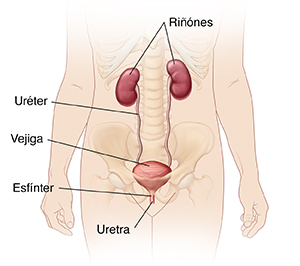Las vías urinarias se encargan de eliminar la orina, que son los desechos líquidos del cuerpo. Los riñones recolectan las sustancias químicas y el agua que el cuerpo no necesita. Los convierten en orina. La orina viaja desde los riñones, a través de los uréteres, hasta la vejiga. La vejiga almacena la orina hasta que esté listo para expulsarla. La uretra transporta orina desde la vejiga hasta el exterior del cuerpo. El músculo principal del esfínter rodea a la uretra media. Este músculo mantiene la uretra cerrada. Al orinar, el cerebro le indica al esfínter que se relaje para que pueda expulsar la orina.
Featured in


